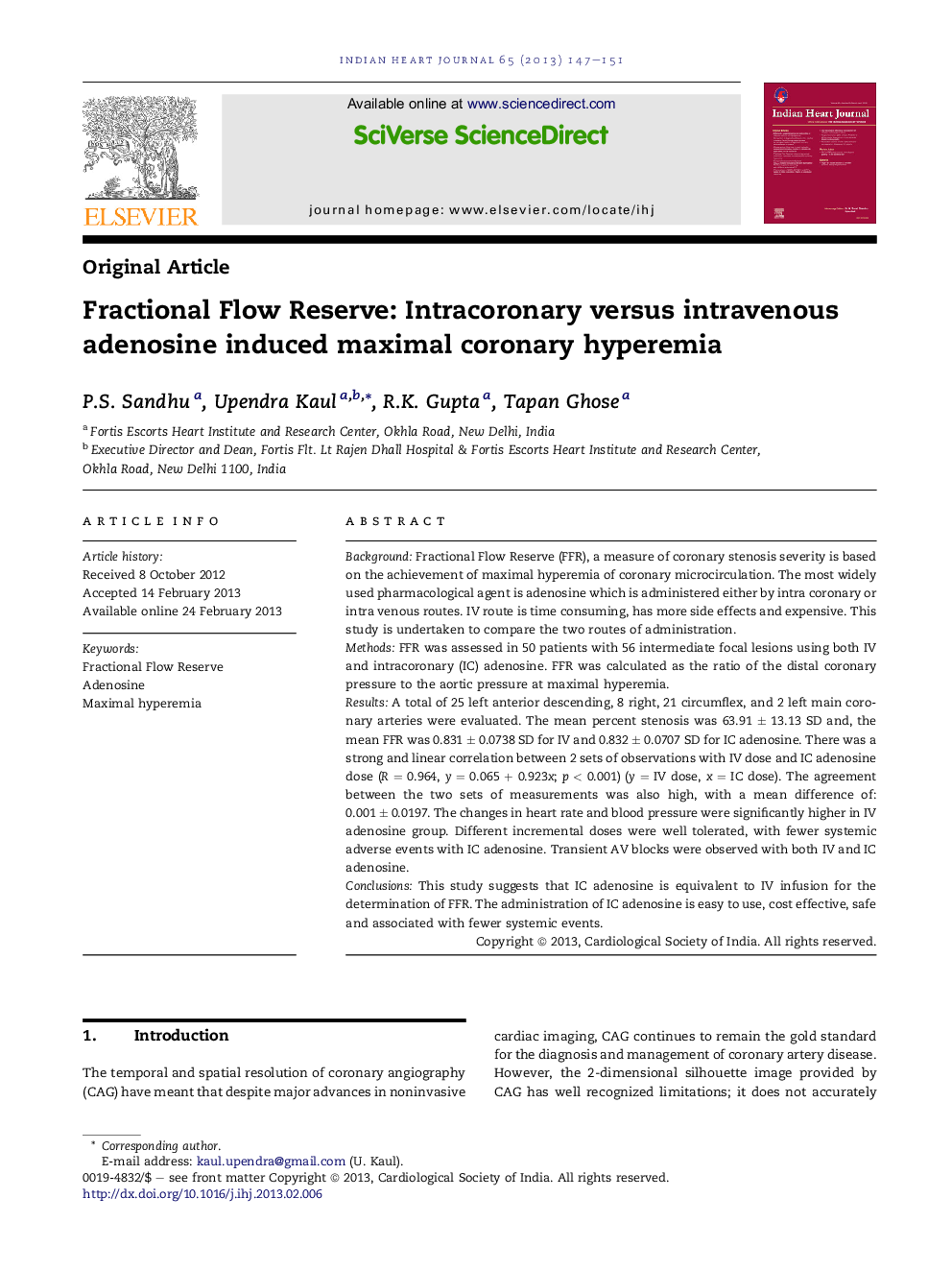| Article ID | Journal | Published Year | Pages | File Type |
|---|---|---|---|---|
| 2928295 | Indian Heart Journal | 2013 | 5 Pages |
BackgroundFractional Flow Reserve (FFR), a measure of coronary stenosis severity is based on the achievement of maximal hyperemia of coronary microcirculation. The most widely used pharmacological agent is adenosine which is administered either by intra coronary or intra venous routes. IV route is time consuming, has more side effects and expensive. This study is undertaken to compare the two routes of administration.MethodsFFR was assessed in 50 patients with 56 intermediate focal lesions using both IV and intracoronary (IC) adenosine. FFR was calculated as the ratio of the distal coronary pressure to the aortic pressure at maximal hyperemia.ResultsA total of 25 left anterior descending, 8 right, 21 circumflex, and 2 left main coronary arteries were evaluated. The mean percent stenosis was 63.91 ± 13.13 SD and, the mean FFR was 0.831 ± 0.0738 SD for IV and 0.832 ± 0.0707 SD for IC adenosine. There was a strong and linear correlation between 2 sets of observations with IV dose and IC adenosine dose (R = 0.964, y = 0.065 + 0.923x; p < 0.001) (y = IV dose, x = IC dose). The agreement between the two sets of measurements was also high, with a mean difference of: 0.001 ± 0.0197. The changes in heart rate and blood pressure were significantly higher in IV adenosine group. Different incremental doses were well tolerated, with fewer systemic adverse events with IC adenosine. Transient AV blocks were observed with both IV and IC adenosine.ConclusionsThis study suggests that IC adenosine is equivalent to IV infusion for the determination of FFR. The administration of IC adenosine is easy to use, cost effective, safe and associated with fewer systemic events.
